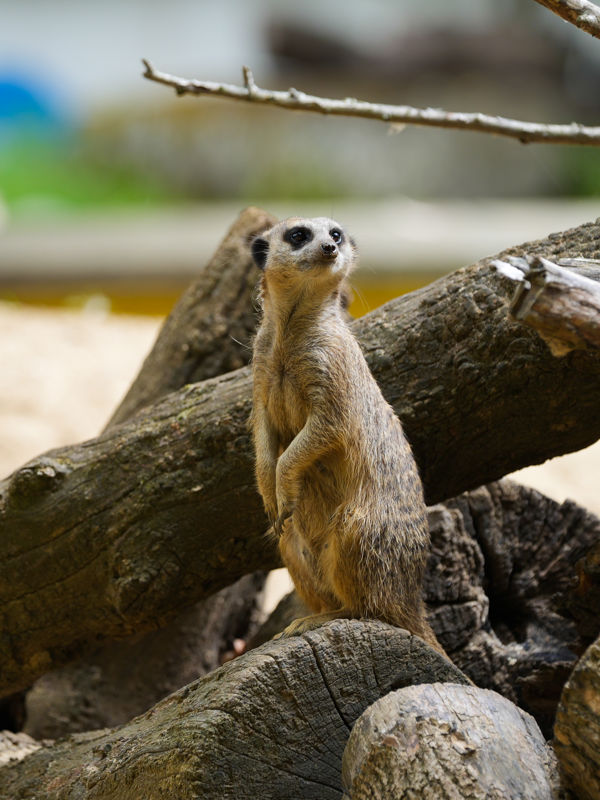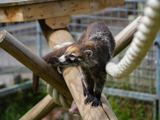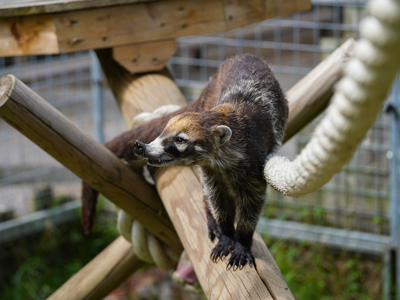
White Nosed Coati
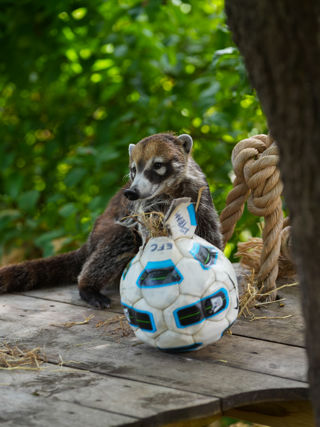
General Information
White-nosed coatis are small mammals native to North, Central and South America, from Arizona to Argentina. They have strong claws and long, highly mobile snouts well-adapted for foraging in crevices and holes for food. Their thick, semi-prehensile tails are used for balance and are often held erect above the body.
Coatis eat fruit, invertebrates, small rodents and lizards. They forage for food on the ground and occasionally in trees.
Male coati's younger than two years of age and females, both related and unrelated, will group together in bands of four to 20 individuals. Adult, male coatis are solitary animals, except during breeding season. Coatis have been called "coatimundi" or "coati-mondi" meaning "lone coati" in Guarani, a native language of Brazil. The name came about due to biologists describing solitary male coatis that they believed to be a separate species at the time.
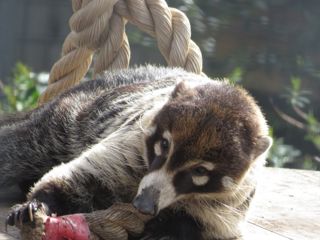
Latin name - Nasua narica
Class - Mammal
Order - Carnivora
Family - Procyonidae
IUCN Status - Least Concern
Habitat - Woodlands and tropical forests
Distribution - Southeastern Arizona, Central and South America
Threats
Habitat destruction, persecution by farmers and landowners.
Fun fact
White-nosed coati perform ‘self-anointing behaviour’ where they rub strong smelling scents from herbs and fruit into their fur to disguise their strong smell from predators who may be tracking them!
Our residents
Alonso

Sign up to our newsletter
Join our mailing list in order to keep up to date with Zoo news and special offers.

